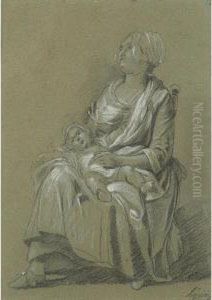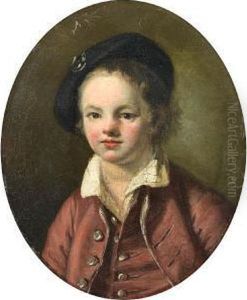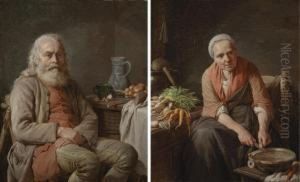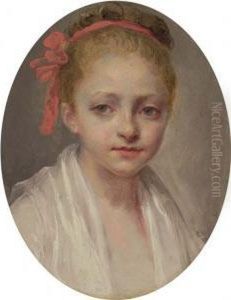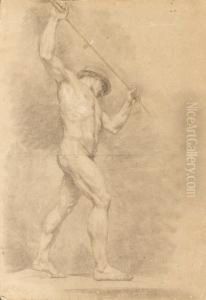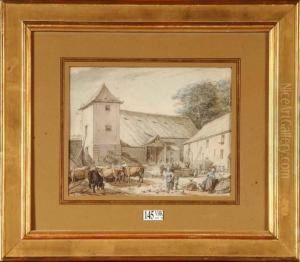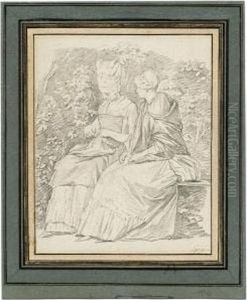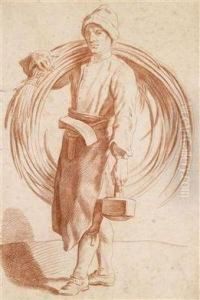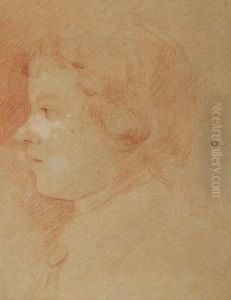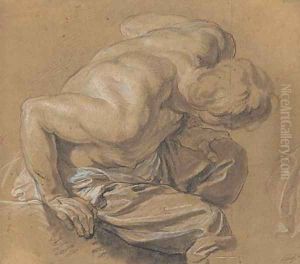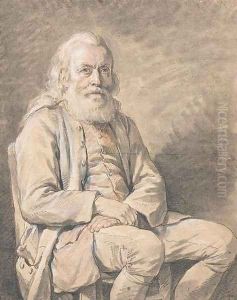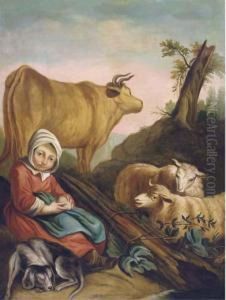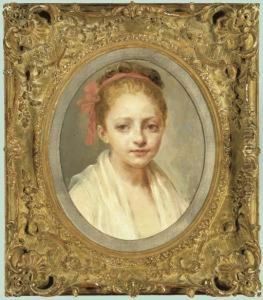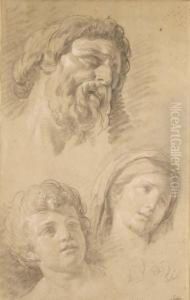Francois-Bernard Lepicie Paintings
François-Bernard Lépicié was a French engraver, draftsman, and painter born on September 4, 1698, in Paris, France. He was the son of Bernard Lépicié, who was also an engraver, and his mother was the painter Renée-Elisabeth Marlié. Growing up in a family with artistic inclinations, Lépicié was naturally inclined towards the arts from a young age. He initially trained under his father and later studied painting under the tutelage of Carle van Loo, a prominent painter of the time.
Lépicié is particularly known for his engravings, which include reproductions of major works by artists such as Rubens, Van Dyck, and Poussin. His work contributed to the dissemination of the styles and compositions of these masters during the 18th century. In addition to his engravings, Lépicié also created original works of art. He was accepted as a member of the Royal Academy of Painting and Sculpture in 1746, which was a significant recognition of his artistic talent.
As a painter, Lépicié focused on genre scenes and portraits. He exhibited at the Salon de Paris, where his paintings were well received. His genre scenes often depicted everyday life with a sense of empathy and attention to detail, capturing the customs and spirit of his time. His portraits, on the other hand, were appreciated for their likeness and the skillful depiction of his subjects' character.
Lépicié's work as an engraver and painter earned him a reputable position in French art circles. His engravings, in particular, played a crucial role in his success, as they were sought after by collectors and connoisseurs of the period. Through his works, Lépicié contributed to the Rococo movement, which was characterized by ornate and decorative elements, as well as a focus on light-hearted themes and the portrayal of the aristocracy's leisurely lifestyle.
François-Bernard Lépicié's career was relatively short-lived, as he passed away on September 3, 1755, in Paris, just one day before his 57th birthday. Despite his early death, his legacy lived on through his engravings and paintings, which continue to be studied and admired for their technical skill and historical value.
